Introducing Fallopia japonica, (a.k.a. Polygonum cuspidatum) one of the 100 most invasive species in the world, according to the Global Invasive Species Database. But you can transform this noxious invasive into a resource, because it’s also a nutritious edible plant, with a rhubarb like flavor when young. Haven’t heard of Japanese knotweed? You might know it as fleeceflower or American bamboo, two more of its many common names. It makes a tasty juice which has great potential in cooking. Fortunately, Japanese knotweed identification and juicing are both easy tasks, as you will soon read.
Where to forage for Japanese knotweed
What plants are easier to find than invasive ones? Not surprisingly, this is an aggressive, adaptable plant. It’s now found over much of North America, according to this range map. It’s not the least bit picky about soil type or pH, and grows well in full sun to part shade. It often grows in roadside clumps, and after you find one, you’ll probably find many more.
Leaves
The 2.5-6 inch long, alternately arranged, smooth-edged leaves are almost heart-shaped, but the base is flat, as you can see in the photo.
Stalks
Japanese knotweed stalks are green with purple blotches. Stalks can reach 12 feet in height. Small, young stalks tend to have more purple than taller ones. Often you will notice the dead brown stalks from last year’s growth, standing among new growth.
Branches are alternately arranged on the stalk, and there is brown papery material at the junction of the main stalk and each branch. These “nodes” give Japanese knotweed the appearance of bamboo, one if the plant’s many but misleading common names. It is NOT in the bamboo family.
Another bamboo-like characteristic of Japanese knotweed stalks is their hollow core. This is helpful for identification, but it makes the plant less valuable as an edible.
Unfortunately for the forager, the outer skin quickly toughens as the stalks grow, leaving little soft, chewable material to a length of mature stalk.
Flowers
In late summer, long fleecy spikes of white blooms emerge from the tips of the stalks. That fleecy appearance accounts for one of its common names, fleeceflower. Here is a roadside clump in bloom (in August, here in Massachusetts):
And here is what the flowers look like closer up:
Harvesting Japanese knotweed
Just cut shoots and stalks with clippers. In addition to ensuring proper identification of the plant, there are two things which require special care:
- Many people try to control it with herbicides, either with a foliar spray or stalk injection. So, for your own safety, you need to make sure your source has not be tainted in this way.
- It is thought that a mere fragment of the stalk can take root, so you must be careful not to leave any plant debris behind when you harvest.
Cooking with Japanese knotweed shoots
As many sources describe, the best time to harvest is in spring when shoots are less than 12 inches tall. When that young, they are tender and can be used as a substitute for rhubarb. You don’t have to peel them, just chop them up and cook in pies, bars, etc. Wonderful. The problem is, this plant grows incredibly quickly, and if you don’t get there within the 5 minutes or so that the shoots remain less than 12 inches tall, you’re out of luck.
Cooking with older stalks
Stalks taller than 12 inches are edible, but the outer skin quickly becomes tough and fibrous. Some people peel off that tough skin and eat the rest (can be used for fruit leather), but there’s not much left after peeling. It’s a lot of work for so little food, and I personally don’t find it worth the effort. So I’ve experimented with using unpeeled older stalks for juice, and here is what I found:
- When less than about 3 feet tall, stalks can be chopped up and boiled in just enough water to cover, for 10-15 minutes, to make an attractive pink, tart juice that does taste something like rhubarb. It’s excellent as a drink when sweetened, and can be used to make jelly, popsicles, and other recipes where you would want a tart, flavorful juice. This juice is good enough to be worth the effort.
- Taller stalks are too tough to be easily chopped, so I slice and tear them lengthwise (much easier). These can be boiled for about 30 minutes in just enough water to cover, to make a pale yellow-green juice that is milder in flavor than the juice of younger stalks. This juice is good, but, in my opinion, not outstanding, and probably not something I will do very often.
- Contrary to my initial assumption, the tender growing tops of taller stalks do not produce the tart, tasty, pink juice of young stalks. They produce the same milder, greenish yellow juice of the tough lower stalks.
- Plants growing in part shade mature more slowly than those in full sun, so if you have access to clumps growing in different light conditions, you will have a several week long window of harvesting stalks small enough (less than 3 feet tall) to make that pink, tart, flavorful juice. And if you hurry, you’ll get some of those tasty, tender shoots, too.
What to do with knotweed (fleeceflower) juice
Add sugar to taste and drink it, use it to make jelly, or try making my strawberry fleeceflower yogurt pops. Freeze the juice if you want to use it later.
Final notes on Japanese knotweed identification and juicing
- Remember that Japanese knotweed can regenerate from a mere stem fragment. So, to avoid spreading this plant, burn, boil, or microwave all plant debris remaining from your culinary adventure.
- Uncertain about identification? Then don’t eat it. Be sure to double and triple check with at least one other reliable source before eating any wild plant.
Have you cooked with Japanese knotweed? Please share your questions, discoveries, experiences, and insights in the comments!
Shared on: HomeAcre Hop #71, From the Farm Blog Hop, Farmgirl blog hop #158, Simple Life Sunday #19, Backyard Farming Connection #82, Mountain Woman Rendezvous #48, Homestead Barn Hop #161, Heritage Homesteaders Hop #14, Simply Natural Saturday










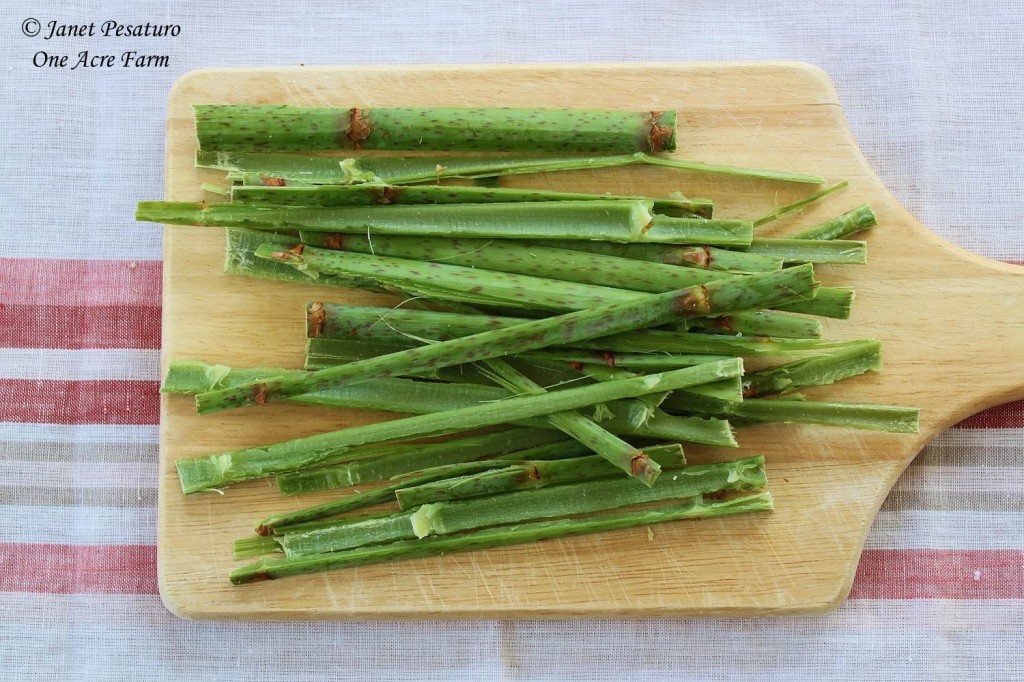
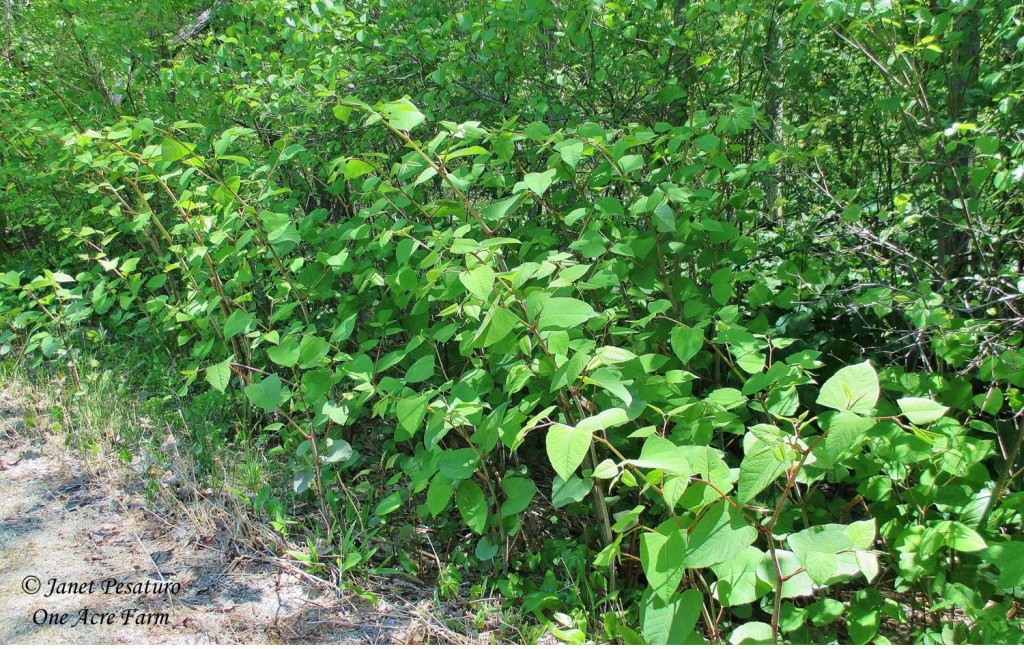
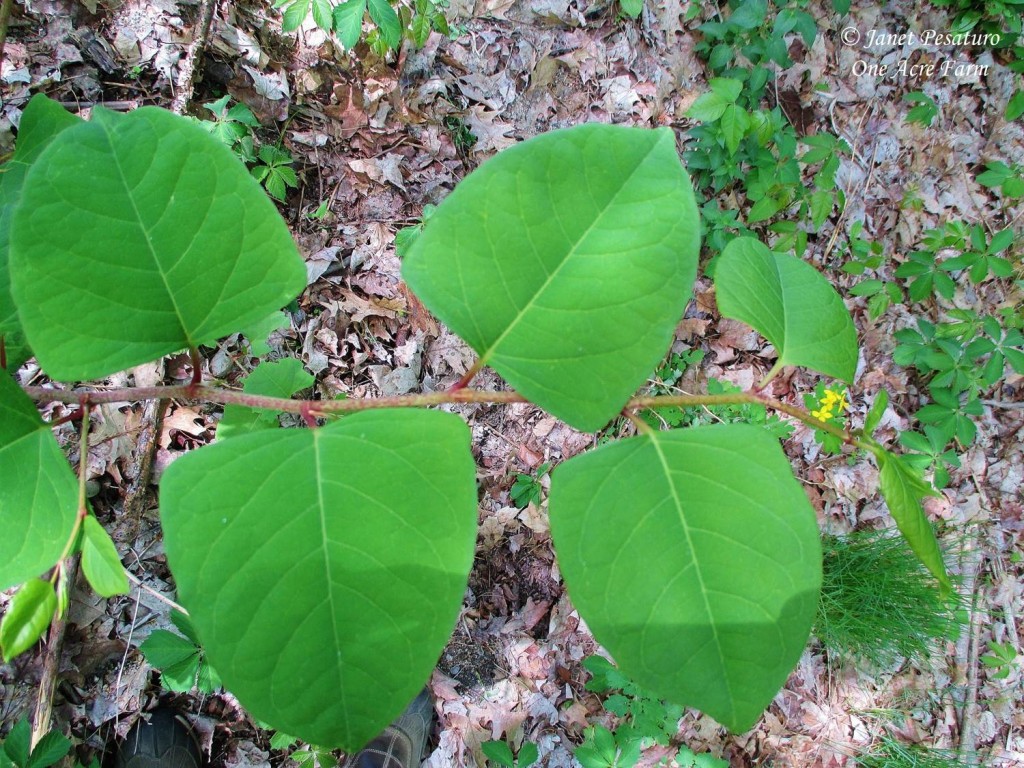

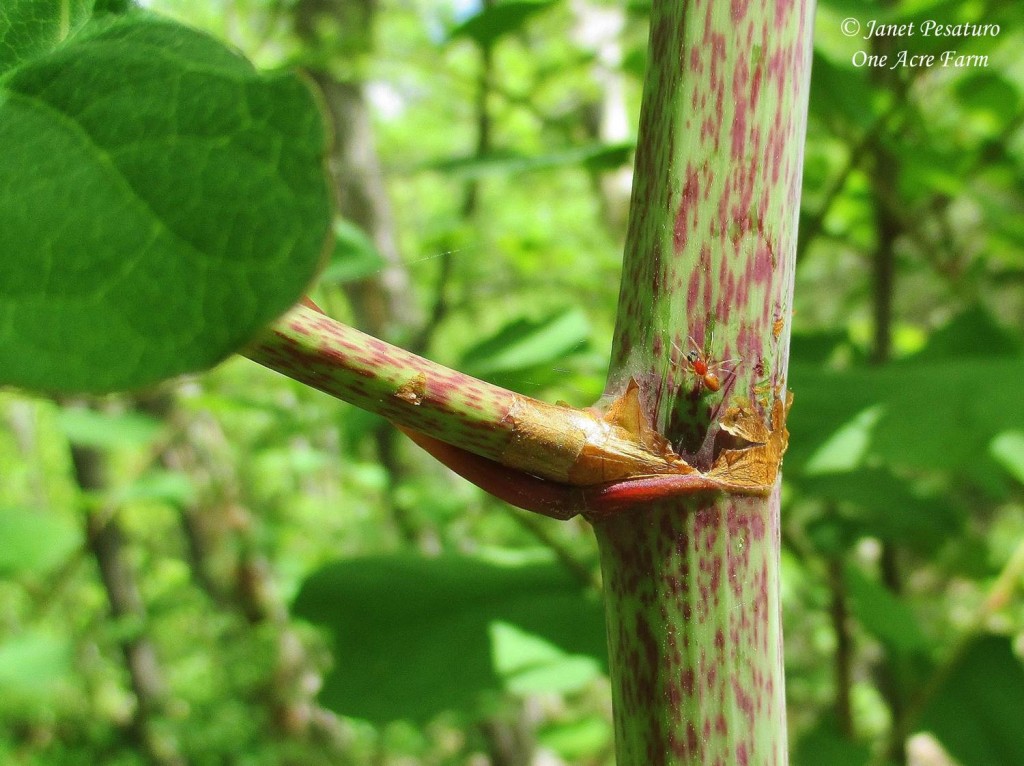
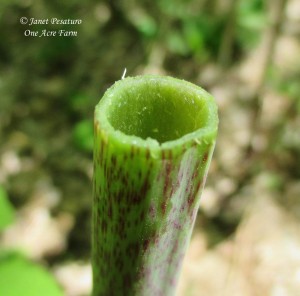
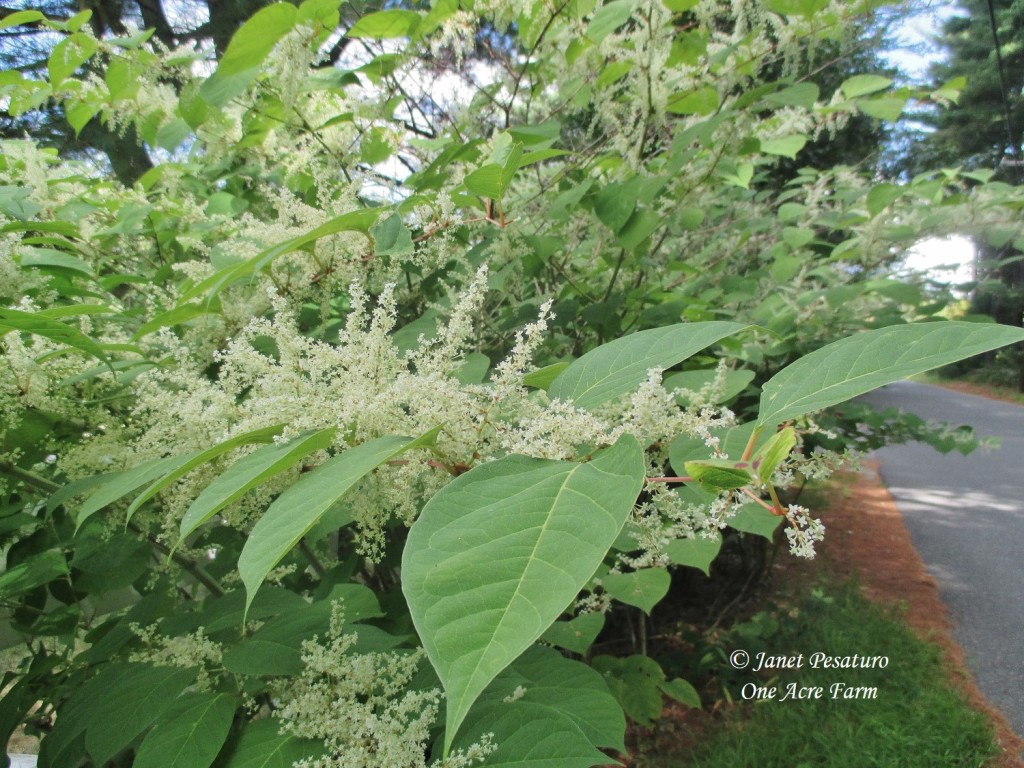
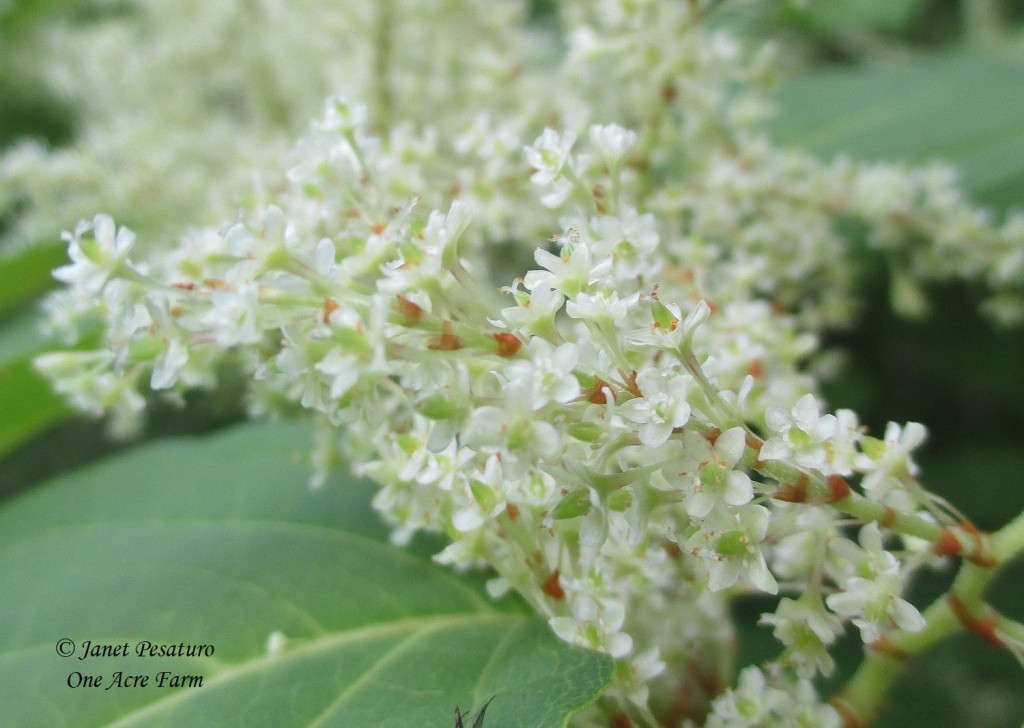
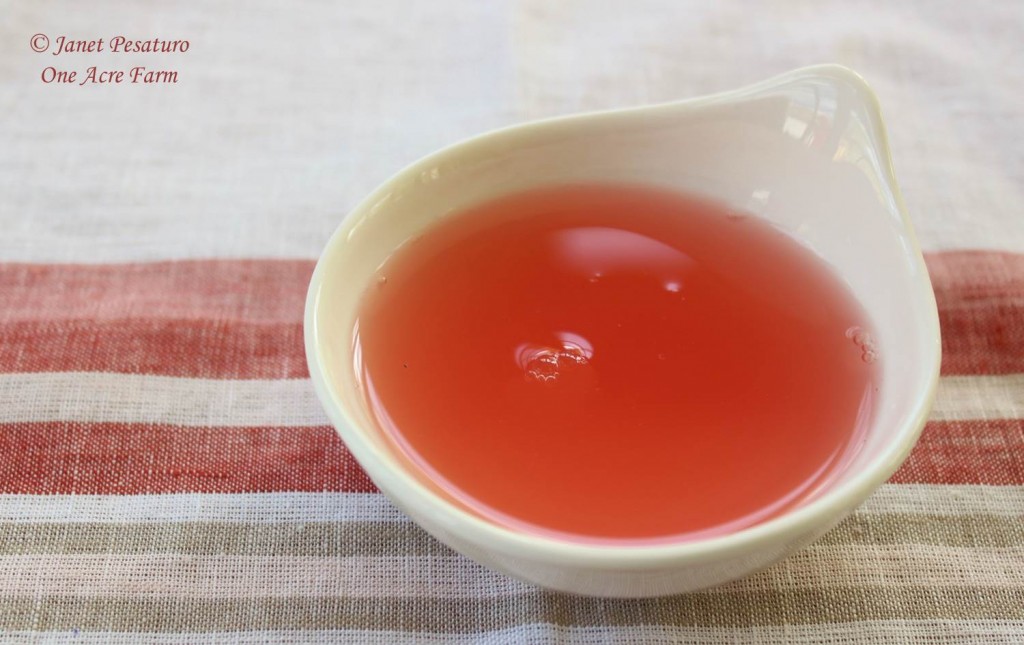
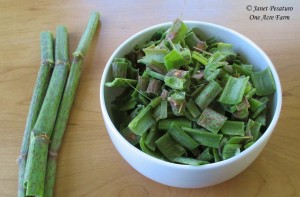
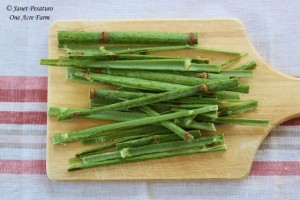
Pingback: Strawberry Fleeceflower Yogurt Pops - One Acre Farm
Thanks for the marvelous JK blog. Most shoots are too tall to eat now. I learned that new plants can originate from discarded stalks and will dispose of such properly by bagging. I’ve been injecting tiny amounts of herbicide into the hollow cut stems. I hope by treating early in the season I can prevent any from going to blossom and seed. This is a work in progress. Winslow
Hi Winslow. Yes, they’re too tall here now, but now that I’ve located some clumps which have not been laden with pesticides, I plan to return next spring to pick them when less than a foot tall. When that small,they can be eaten in their entirety – you don’t have to juice them.
Pretty great post. I just stumbled upon your weblog and wished to say that I have
really loved browsing your weblog posts. After
all I’ll be subscribing on your feed and I’m hoping you write
once more soon!
Wow, that looks like a really useful plant! thanks for submitting it to the HomeAcre Homesteading blog hop. Feel free to stop by and submit another post this week (www.pintsizefarm.com).
Thanks, Heidi!
I just wanted to compliment you on this post. Wild Edibles are a passion of mine and I blog about them too. I love how you included clear, close-up photos of different parts of the plant! I love that you went in-depth about the plant. I have not found Japanese knotweed in my area so your post is nice for the aforementioned reasons so that perhaps one day I will find them when foraging because I will have good pix in my memories from your photos (and other sources, too).
Anyway, I just wanted to tell you to keep up your awesome style of writing/blogging. I’m going to subscribe!
Hi CM, thanks for the compliment! And double thanks for stopping by, because it led me to your blog. I see you have some nice wild edibles posts yourself. I am currently building my wild edible pin boards, so I will be pinning some of yours today. Happy foraging!
I just pulled 3 giant garbage bags of these monsters from my yard yesterday! I was thinking the whole time, these have to be edible… Of course my dogs use them as fire hydrants, and my neighbors spray noxious clouds of pesticides on their yards, so I’m afraid to eat them.
LOL (on the fire hydrant). Yeah, it’s important to find it where you’re sure it hasn’t been tainted with herbicides. That’s the main issue, here, too.
The New England Wild Flower Society has posted several of my Japanese Knotweed recipes on their website. Here’s the link: www (dot) newfs (dot) org/article-depository/specific-invasive-plants/japanese-knotweed-recipes.html
Thanks – the crumb cake in particular sounds delicious!
Pingback: Strawberry Knotweed Crisp - One Acre Farm
I have a question..about six years ago I had this growing in an area of my yard that I wanted to plant some flowers..I am ashamed to admit that I used a pesticide (after trying everything else..including burning). Nothing worked..I have a very large patch now. Back to my question..After six years would they be safe to use as food now?
Hi Robin, I would look back and figure out exactly which herbicide you used. You should be able to find information online about how long that herbicide and any toxic degradation products remain in the location. Hope that helps.
I have just looked at your entrie blog and am in love! You have a definite gift and are so talented. You are quite an inspiration.
Thank you!
Good day,
Thanks for your information. What can we do with the leaves of the knotweed? its fall where i live and i have lots of leaves left. Can i eat them or make tea with them? I cannot find any information about consuming the leaves.
Thanks
Pingback: Podcast 63 5 Rules for Foraging Wild Edibles + 25 Wild Edible Plants – Melissa K. Norris
I had no idea these were edible, though I should’ve assumed since they’re related to buckwheat. Being a forestry technician I am interested in ways to control this plant, and I noticed the patch in the township property adjacent to mine, their leaves are being skeletonized in July, but I cannot seem to find the culprit. I stumbled on your page during the search for answers to this, as native biological control certainly beats introducing yet another potential invasive. I may have to give your spring juice recipe a try next year though. I was really skeptical about Staghorn Sumac-aide back in the day but learned that stuff is good so why shouldn’t knotweed be as well?
im
This is a beautiful article. Thank you for the quality of information you’ve provided. I plan to try to locate a patch of this weed for my own use very soon! Thanks again!